Nexus 7 (2013) - Mini Review
by Brian Klug on July 27, 2013 12:54 AM EST- Posted in
- Tablets
- Snapdragon
- Qualcomm
- Android
- Mobile
- APQ8064
- Nexus 7
- Android 4.3
Last year the Nexus 7 debuted with a Tegra 3 SoC, which for reminder consisted of a 4+1 architecture of ARM Cortex A9 CPUs, with the 4 A9s built on 40nm G, and the +1 “shadow core” A9 built on 40nm LP (TSMC’s 40 LPG process), accompanied by ULP GeForce GPU with 12 cores running at a max GPU clock of 416 MHz. The exact SoC was NVIDIA’s Tegra 3 T30L, which could run one A9 at up to 1.3 GHz and all A9s at up to 1.2 GHz.
Rather than the relatively logical upgrade path of going to NVIDIA’s Tegra 4 SoC (I’ve heard all manner of speculation about what happened there), the new Nexus 7 switches to Qualcomm’s APQ8064–1AA, a version with 4 Krait 300 CPU cores (yes, Krait 300, not 200) running at up to 1.5 GHz and Adreno 320 graphics. Rather than use a PoP and LPDDR2, this specific APQ8064 variant goes to PCDDR3L–1600 MHz instead, including 4, 4Gb discrete 1.35V SK-hynix DRAM devices off to the side (more on the opposite side of the PCB) adding up to 2 GB of RAM. Qualcomm's Snapdragon S4 Pro and Snapdragon 600 branding gets confused here, although Qualcomm is calling the APQ8064 inside the Nexus 7 (2013) S4 Pro, it's more like an underclocked or lower binned Snapdragon 600.
At this point APQ8064 is probably the most well understood SoC in recent memory (so much so that I’m pining for devices to include something different just from an academic perspective) so I’ll spare the very verbal discussion about its performance.
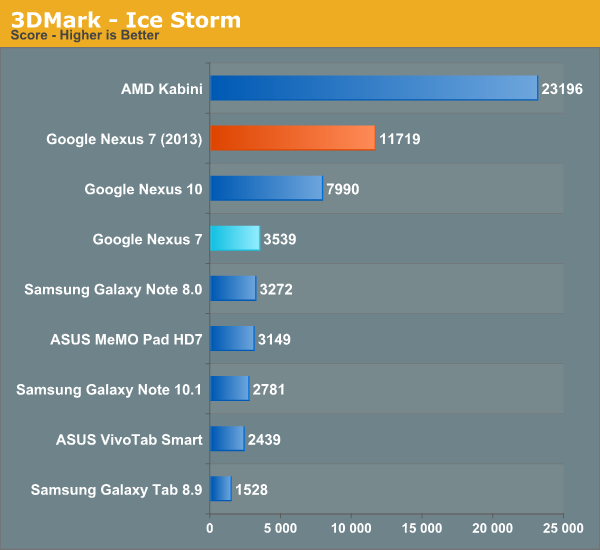



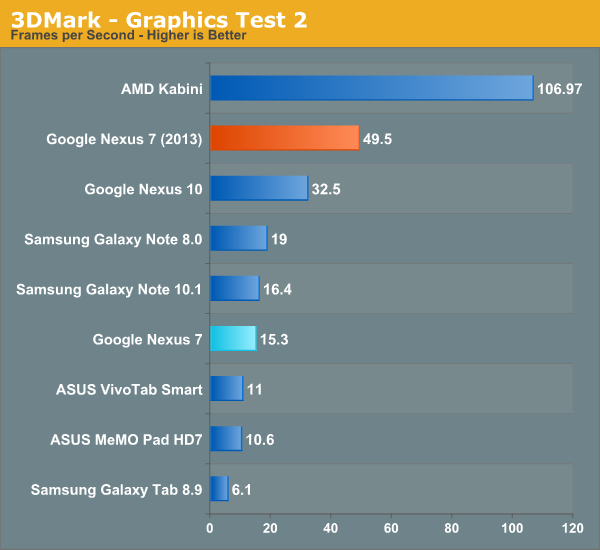
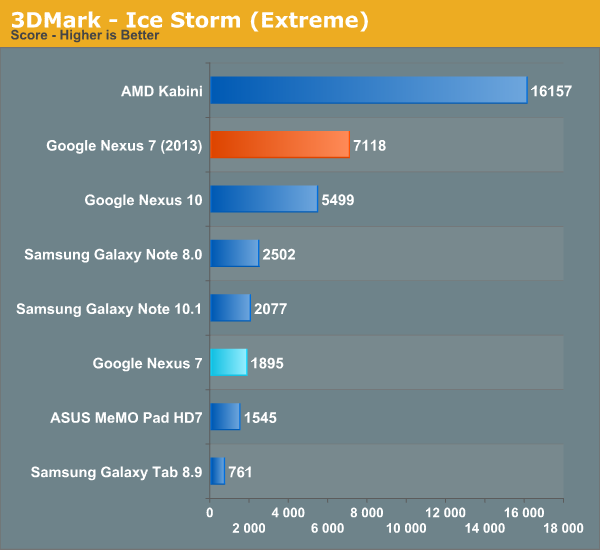

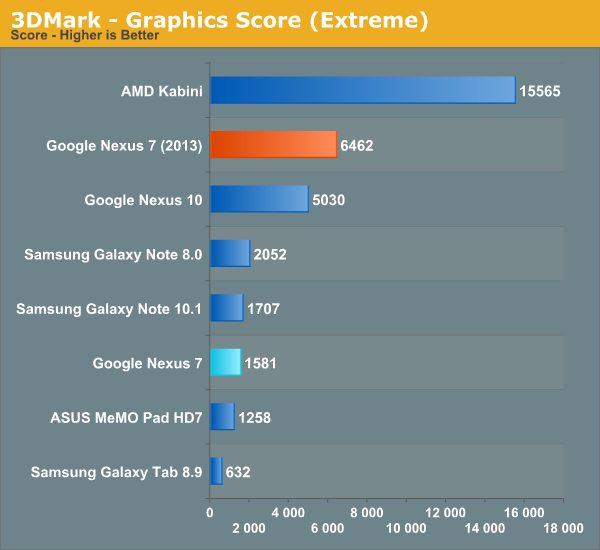

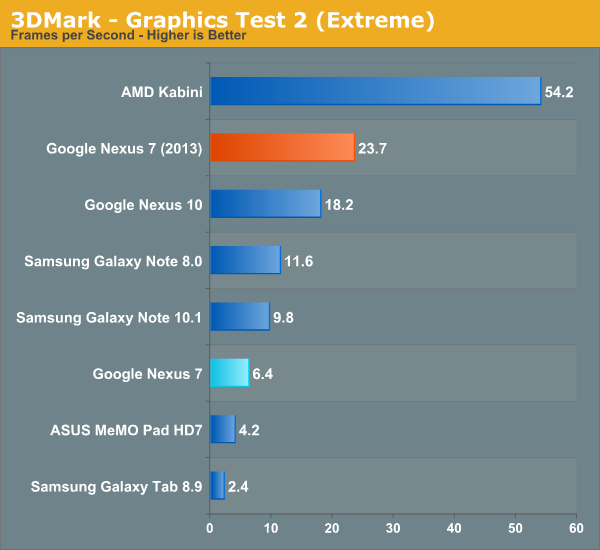


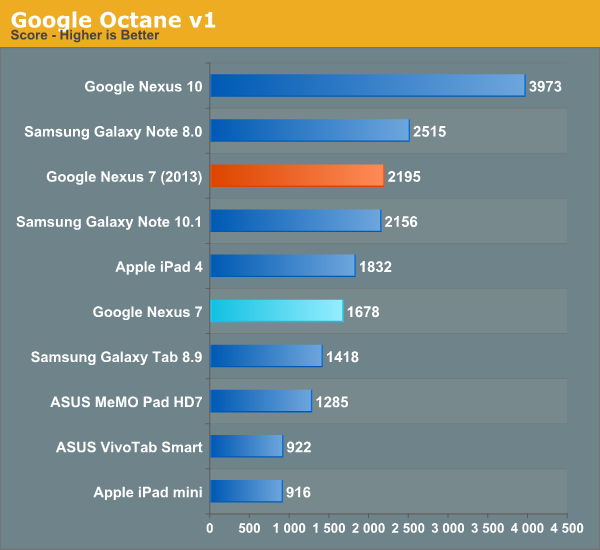
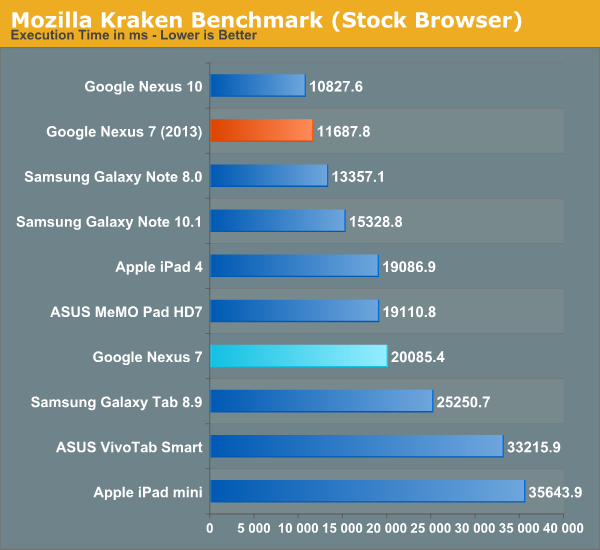
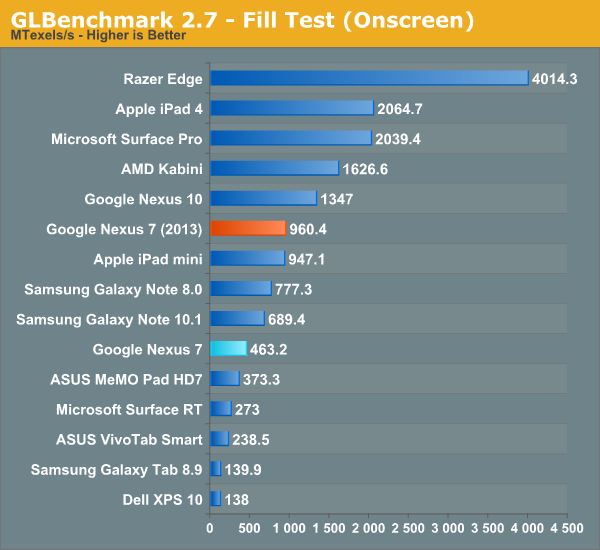
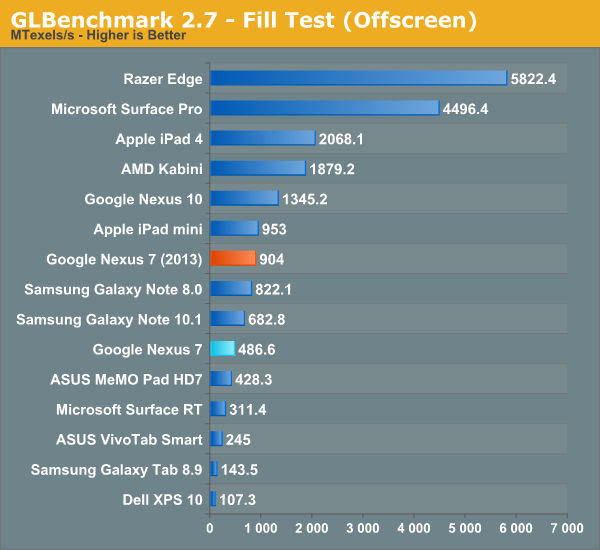
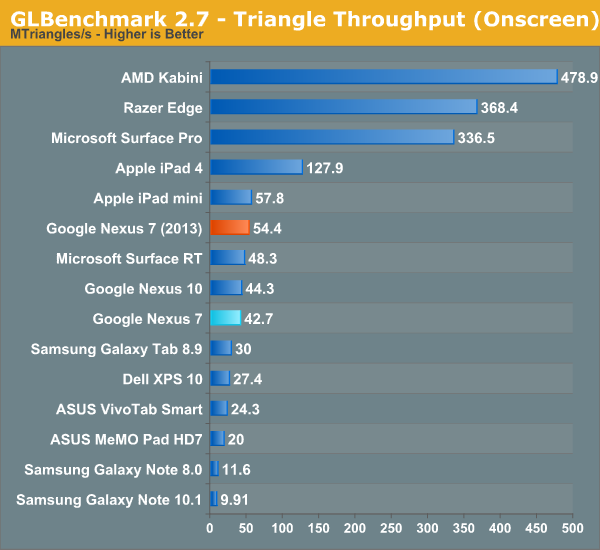
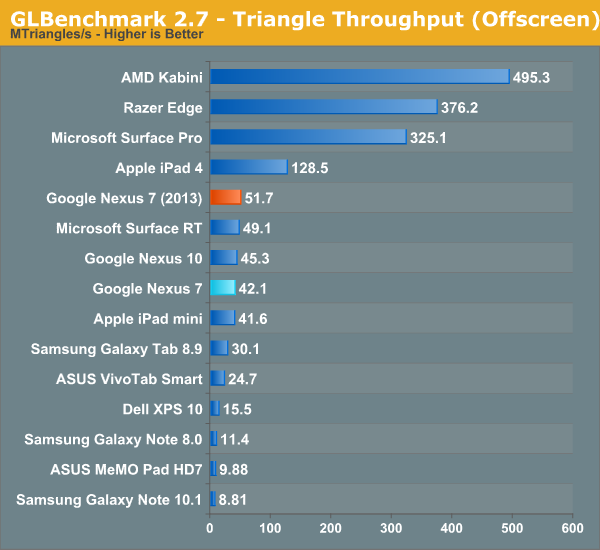
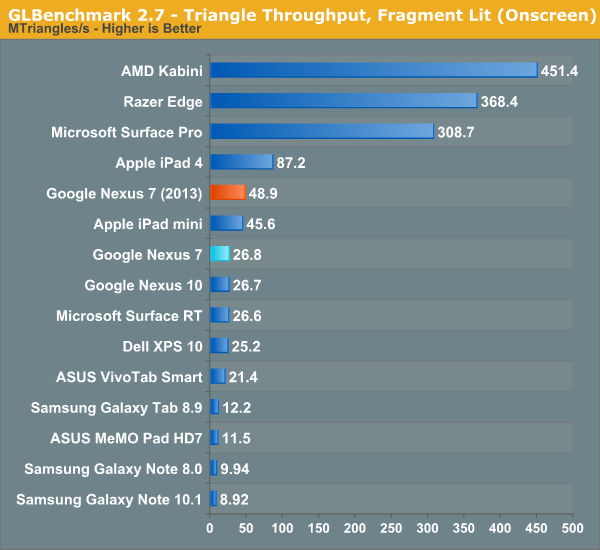
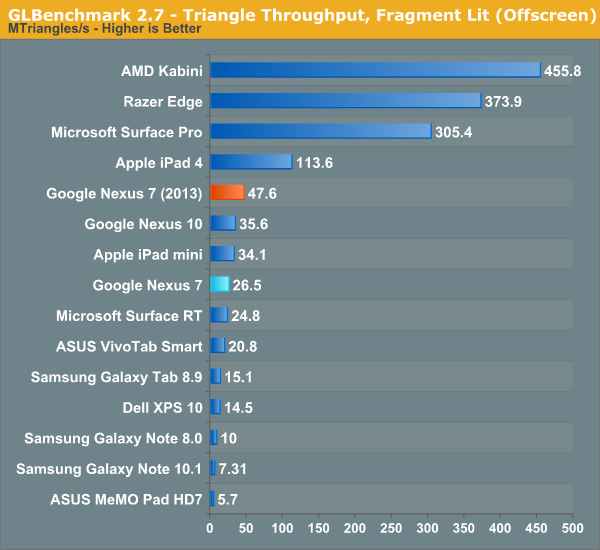
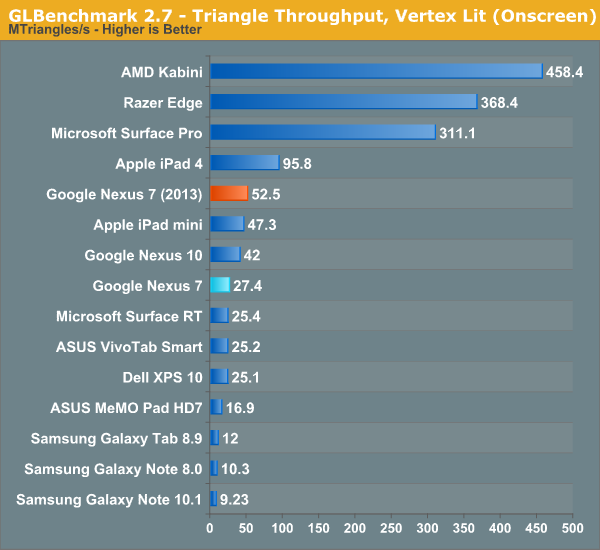
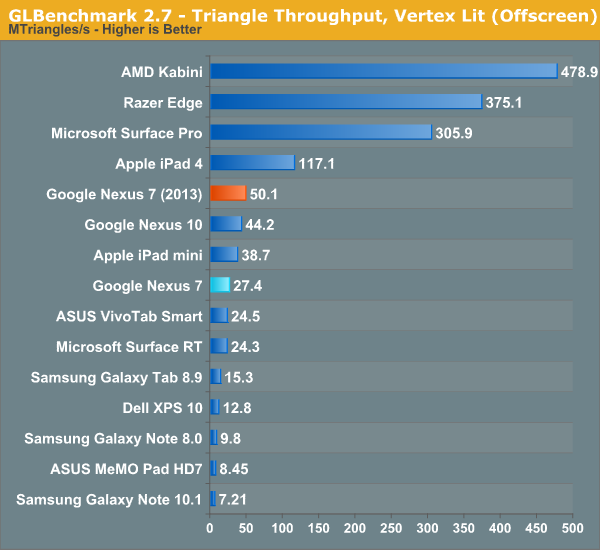

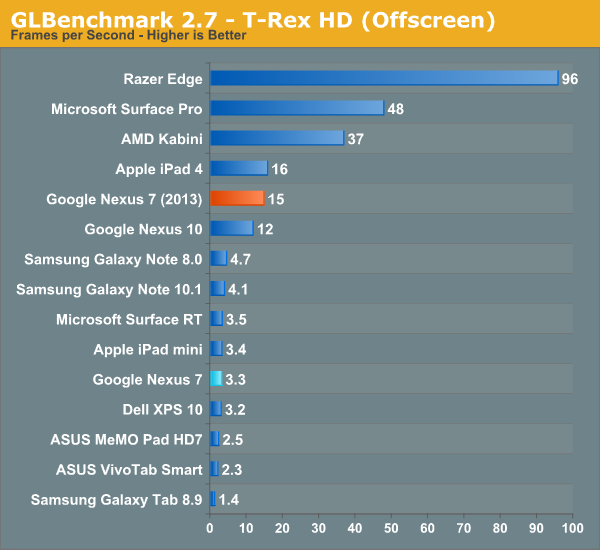
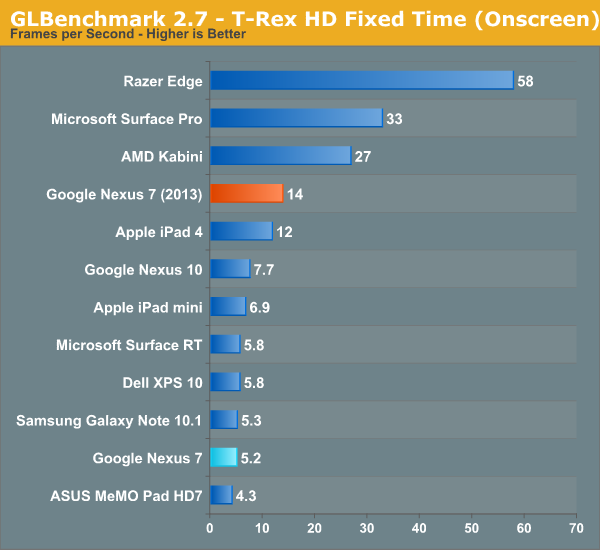
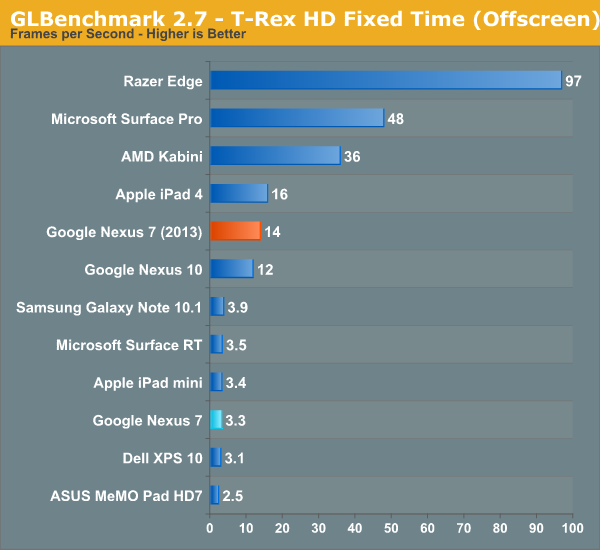
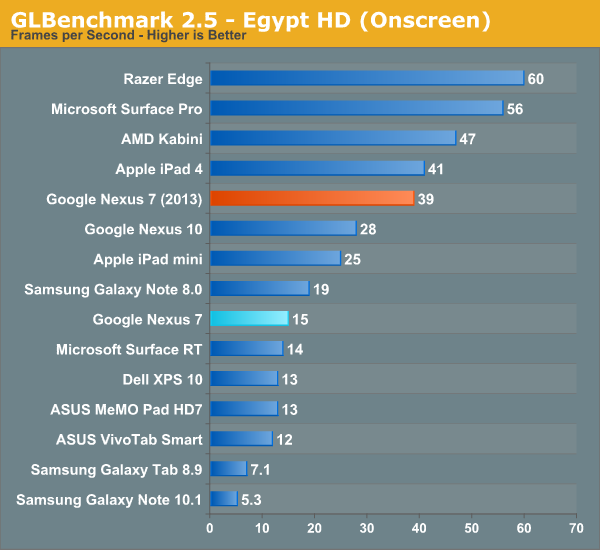
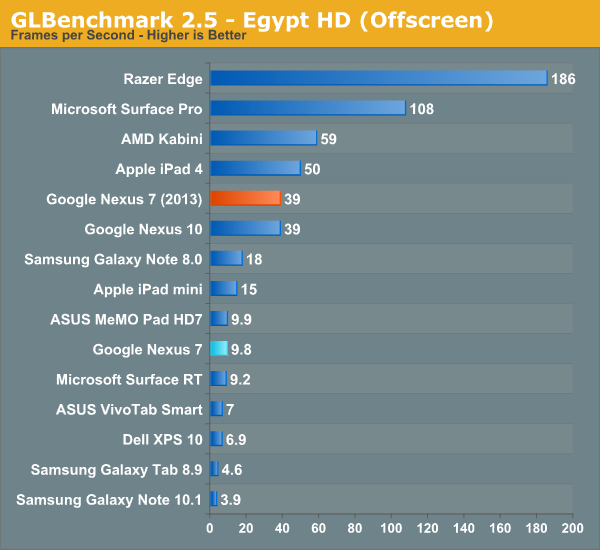
Suffice it to say, moving from 1.2–1.3 GHz Tegra 3 to 1.5 GHz APQ8064 represents a big jump forwards in performance. Google claimed 1.8x improvement on CPU performance, and 4x improvement on GPU, which gets validated pretty much consistently through the benchmarks. I never felt like Tegra 3 was a slouch by any means (performance was more I/O bound on the OG Nexus 7, which we’ll talk about in a moment), but the new Nexus 7 has ample performance for the considerable increase in screen resolution.
Dat eMMC
It wasn’t any secret with the original Nexus 7 that much of the real world performance was gated by storage I/O throughput – we wrote about it after all – and storage performance was a common complaint while multitasking on a few other previous and similar era ASUS tablets. Most of the time performance was acceptable, and for $200 you can’t complain too much about things, the issue was that further on in the life of the tablet performance began degrading somewhat notably, leading to complaints.
Obviously the first thing I did on the Nexus 7 (2013) was run Androbench with the same 100 MB settings to test and see what out of box I/O performance looks like. Things are much better with the new Nexus 7 than they were with the previous one, so at a high level all is good.
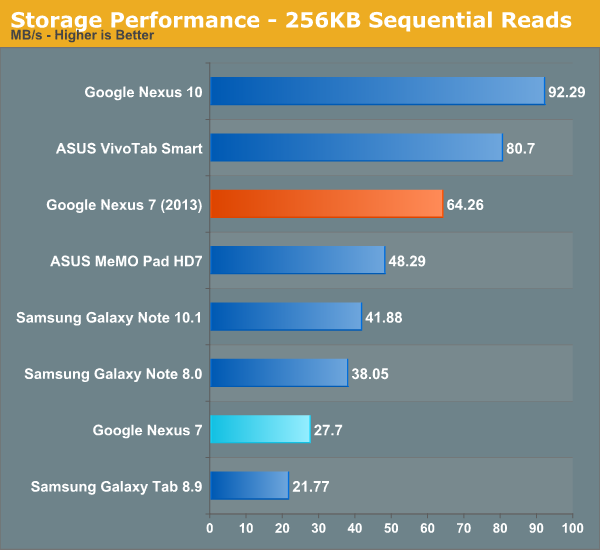
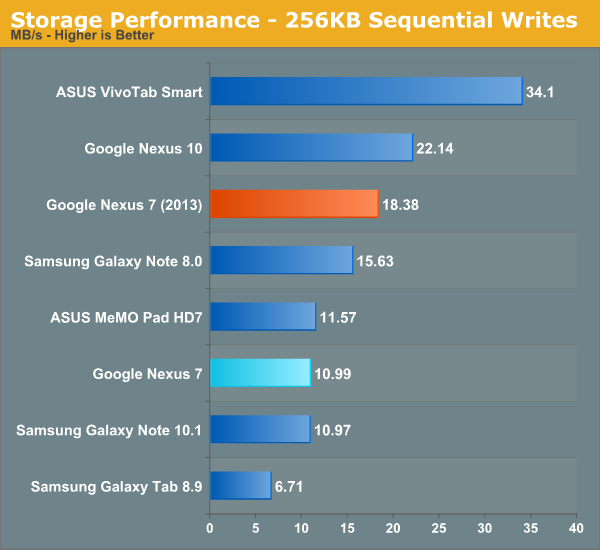
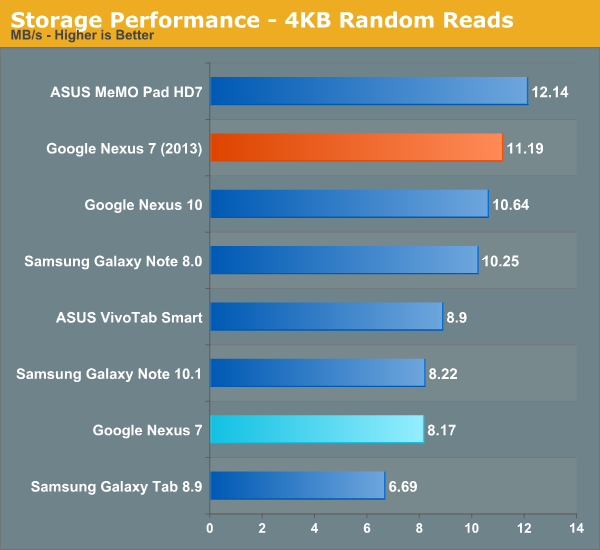

The story actually is a bit more involved however. One of the big problems was that the slowness which occurred with the prior Nexus 7 took device aging to appear – it was great for the first few months, but after you started loading it things tailed off. The new Nexus 7 (2013) with Android 4.3 includes support for fstrim, essentially idle garbage collection, which TRIMs the eMMC when a few conditions are met – the device is idle, screen off, and battery above roughly 70-percent. I’m told that TRIM support has been part of the eMMC standard since around version 4.2, it was just a matter of enabling it in software. The result is that the new Nexus 7 shouldn’t have these aging affects at all. Better yet, fstrim support has also been added to the old Nexus 7 with as of the Android 4.3 update, so if you’ve got a Nexus 7 that feels slow, I/O performance should get better after fstrim runs in the background. I'm checking on whether the other Nexus devices have also had TRIM support added. I would consider the slow storage aging problem fixed as of now, and Google took the eMMC and storage I/O performance issues with the previous Nexus 7 to heart for this version.


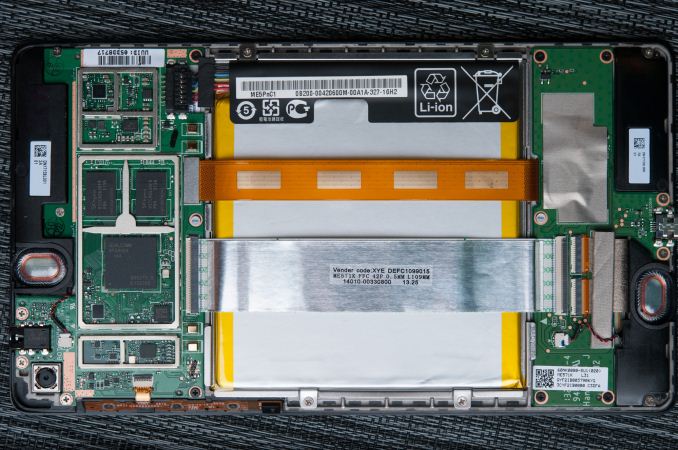
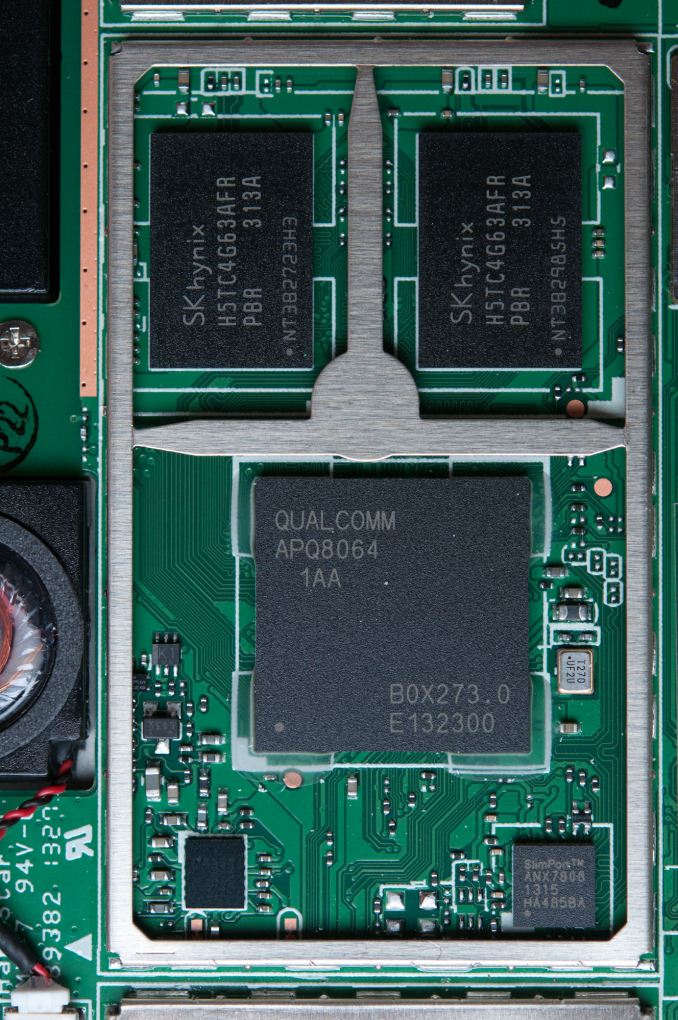














252 Comments
View All Comments
hughlle - Wednesday, July 31, 2013 - link
Agreed, what is the issue. I do not know whether my N10 has dual line in line out for the very reason that I have absolutely no reason to have tested it, the built in microphone is more than sufficient in terms of quality for video calls and such.Hrel - Tuesday, July 30, 2013 - link
Seriously with the no 802.11ac? It's 2013, no wireless devices should be shipped without 802.11ac; that's stupid.Arbie - Tuesday, July 30, 2013 - link
-No micro-SD = no sale. As the author notes, tablets are widely used for watching videos. With SD you can swap media sets in and out infinitely faster than any other way. Like... 16GB in 5 sec. Google and Amazon can continue to pretend that it doesn't matter, but that's obviously idiotic. I'll buy something else, that's designed for ME. The price difference is worth it for a such major feature.
fteoath64 - Tuesday, August 6, 2013 - link
Yeah. No SD no sale for many out there. Look at HTC, almost going OUT OF BUSINESS for omitting such a simple thing. In fact, none is so bold as to provide TWO microSD slots!!!. People looking to MicroSD slots flocking to GS4 by the millions and millions!, Like over 10 million!.darwinosx - Tuesday, August 6, 2013 - link
Good for the few how care. Very few devices have them now and soon none will. Get used to it.netmann - Tuesday, July 30, 2013 - link
Can someone please review Nokia Lumia 1020 since 920 review was skipped!darwinosx - Tuesday, August 6, 2013 - link
Yeah! There's like 3 people who care!!Travis Jackson - Wednesday, July 31, 2013 - link
Very tempting... However, I think I'll wait a few months to see if a "Bay Trail" equivalent turns up - Preferably something with the same resolution (1920x1200), but an 8-inch screen.I would gladly pay extra for Intel inside.
fteoath64 - Tuesday, August 6, 2013 - link
Forget Intel's BS of a chip for any tablets. Their gpus are so slow, you might only be watching videos and not playing cool games you wanted. Sorry, that chip has been left behind unless you are after a Windows RT tablet ?!.! Why would you want that ?.KDOG - Saturday, August 3, 2013 - link
No HDMI?? Why? It seems backwards that the Nexus 10 - with its already easier to view bigger screen has a HDMI out port but the smaller one - that you'd be more likely to want to send out to a bigger screen - doesn't have one. Its not like the hardware wouldn't support it.